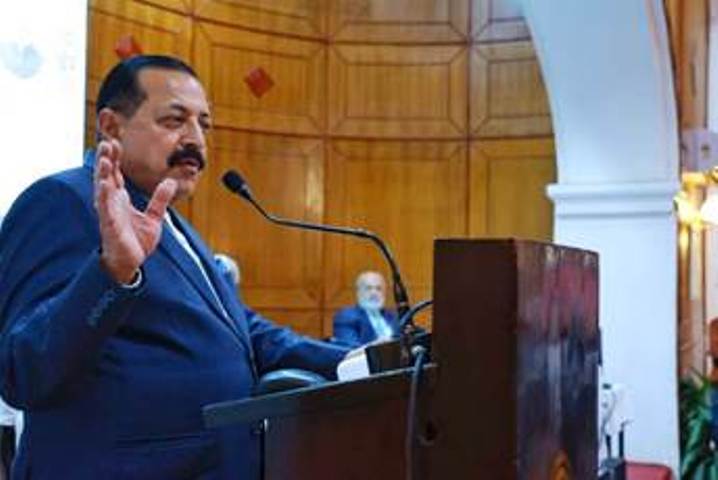India's Strengthened Disaster Preparedness: Approach to Earthquake Resilience
Dr. Jitendra Singh recalled the significant role Gujarat played in pioneering disaster management efforts post the devastating Gujarat earthquakes.

- Country:
- India
Union Minister Dr. Jitendra Singh, while addressing the Rajya Sabha, detailed India's extensive disaster preparedness initiatives, with a specific focus on earthquake resilience. He underscored the progress made in strengthening the country's ability to respond to seismic activities, especially in high-risk zones such as Gujarat, Uttarakhand, and the Himalayan belt.
Evolution of India's Disaster Management Framework
Dr. Jitendra Singh recalled the significant role Gujarat played in pioneering disaster management efforts post the devastating Gujarat earthquakes. Under the leadership of then-Chief Minister Narendra Modi, the Gujarat Disaster Management Committee was established, setting a precedent for the formation of the National Disaster Management Committee in 2005. Additionally, the establishment of the Institute of Seismological Research in Gujarat laid the foundation for India's scientific approach to earthquake preparedness. Later, as Prime Minister, Narendra Modi further reinforced this initiative by setting up the National Centre of Seismology to enhance seismic research and monitoring.
Expansion of Seismic Observatories and Monitoring
The Minister highlighted a remarkable increase in seismic observatories across the country. In 2014, India had only 80 observatories, whereas today, this number has grown to 168—an expansion that surpasses the progress made in the previous seven decades. This advancement significantly strengthens India's ability to monitor and respond to earthquakes with greater accuracy and efficiency.
Preventive Measures in High-Risk Zones
Recognizing that nearly 59-60% of India's geographical area is prone to seismic activities, the government has adopted various preventive measures, particularly in earthquake-prone regions such as Kutch, Bhuj, Uttarakhand, and the Himalayan belt. These initiatives include:
- Retrofitting of Infrastructure: Post the Bhuj and Kutch earthquakes, structural reinforcement has been a primary focus. AIIMS New Delhi and Bhuj hospitals were among the first institutions to undergo retrofitting, ensuring they can withstand future seismic events. Moving forward, schools and other critical infrastructure will be incorporated into this initiative.
- Building Code Compliance: Strict enforcement of earthquake-resistant building codes has been prioritized, ensuring that both new and existing structures meet safety standards.
- Regular Mock Drills: To enhance preparedness, frequent mock drills are conducted across vulnerable regions, ensuring swift and coordinated disaster response.
Himalayan Region and Northeast India's Preparedness
Given the high vulnerability of the Himalayan region to earthquakes, the government has implemented early warning systems and a well-structured disaster response framework. Public awareness campaigns, such as ‘Aapda Ka Samna’ on Doordarshan and the ‘Homeowners Guide for Earthquake and Cyclone Safety,’ have been launched to educate citizens on safety measures.
Dr. Jitendra Singh also emphasized that Northeast India remains a top priority in earthquake preparedness efforts. Several seismic observatories have been installed to monitor activities of magnitude 3.0 and above. Over the past decade, the government has focused on enhancing disaster resilience in the region, aligning with broader technological advancements and national development plans.
Strategic Government Initiatives and Missions
As part of India's disaster risk reduction strategy, Prime Minister Narendra Modi proposed a 10-point agenda in 2016, further integrating it into the Vision Document 2047, which aims for an earthquake-resilient nation. Many missions and schemes launched within the first 100 days of Modi Government 3.0 focus on technological advancements and regional development. Notable initiatives include:
- ‘Mission Mausam’ under the Ministry of Earth Sciences.
- A Semiconductor Development Mission to boost technological capabilities.
- A ₹1,000 crore allocation for space startups, emphasizing innovation-driven resilience.
Risk Transfer Mechanism and Infrastructure Insurance
Dr. Jitendra Singh also addressed infrastructure insurance against earthquake-related damage. The Risk Transfer Mechanism assesses disaster-induced losses and ensures comprehensive insurance coverage. Guidelines have been established to facilitate this mechanism, and relevant agencies are tasked with enforcing strict adherence.
Commitment to a Disaster-Resilient India
The Minister reiterated the government's dedication to enhancing disaster preparedness and resilience nationwide. By leveraging advanced technology, stringent policy measures, and widespread public awareness campaigns, India is taking proactive steps to mitigate earthquake risks and ensure the safety of its citizens and infrastructure.
- READ MORE ON:
- Dr. Jitendra Singh
- earthquake resilience
- Rajya Sabha










